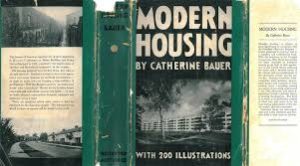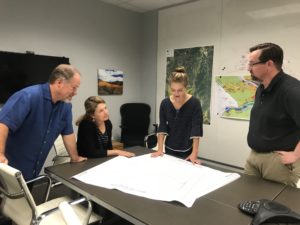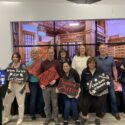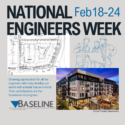Planning Story of the Day
 “Back in 1999, I was the planning manager for the City of Lakewood. I was asked by the mayor and city manager to provide an entire day tour for a gentleman coming in from New Jersey who was considering buying 100 acres in Lakewood to develop (his first development project – as his father was a large developer on the east coast and he wanted to branch off on his own to make his own new mark elsewhere), as the Lakewood property was one of three different properties in the country he was considering. As I knew so much about the City, was a native to the area, lived and breathed most of my life in the City, and that I knew what was on the forefront of new development to come, the gentleman wanted to know anything and everything about Lakewood and the area (including Denver and JeffCo as neighboring communities) before he made his final decision to purchase a land parcel for his envisioned project. So, I arranged an entire day tour for him, showing him neighborhoods, old developments, and new developments; explaining problems the City was dealing with, boasting about successful projects; revealing neighborhood opposition perspectives, as well as community support and desires, business relationships, and, oh yes, – the open spaces and parks in the area… The tour lasted the ENTIRE day and we went to every neighborhood area possible in the City.
“Back in 1999, I was the planning manager for the City of Lakewood. I was asked by the mayor and city manager to provide an entire day tour for a gentleman coming in from New Jersey who was considering buying 100 acres in Lakewood to develop (his first development project – as his father was a large developer on the east coast and he wanted to branch off on his own to make his own new mark elsewhere), as the Lakewood property was one of three different properties in the country he was considering. As I knew so much about the City, was a native to the area, lived and breathed most of my life in the City, and that I knew what was on the forefront of new development to come, the gentleman wanted to know anything and everything about Lakewood and the area (including Denver and JeffCo as neighboring communities) before he made his final decision to purchase a land parcel for his envisioned project. So, I arranged an entire day tour for him, showing him neighborhoods, old developments, and new developments; explaining problems the City was dealing with, boasting about successful projects; revealing neighborhood opposition perspectives, as well as community support and desires, business relationships, and, oh yes, – the open spaces and parks in the area… The tour lasted the ENTIRE day and we went to every neighborhood area possible in the City.
I explained many things, showed him everything possible, and answered all his questions and gave it a big shot of a day. It was a very memorable day and I was happy to have been able to make an impression on him along with others that he talked to over time – but his main goal was to get an honest ‘tour’ and ‘opinion’ with a perspective about the community he wanted to (possibly) become a part of. Within the next month, he decided which city and property he would funnel his own investment in – he was/is Marc Falcone and with his original company, Continuum Partners, he bought the vacant Villa Italia Mall in 1999, a 100-acre site located at the SE corner of Alameda and Wadsworth and invested $850M to build BELMAR as we know it today. Consequently, he moved to Denver, built up the Belmar project (after he demolished the mall – I actually have an old brick from the mall in my office) and moved on to other projects in the region, like the Union Station Redevelopment, Bradburn Village, and Kent Place.
I like to think that had he not learned so much about the area from me and selected one of the other properties – Belmar would not be as we know it today (an open-air shopping district featuring over 80 shops and restaurants, a movie theater, and a bowling alley) — what would the alternative have been?” — Vince Harris, AICP, Director of Planning
Did You Know? – Catherine Bauer Wurster – Nobel Peace Prize Winner
 Catherine Bauer Wurster led the Houser movement, which advocated for high-quality public housing that grew more popular as the Great Depression set in. She studied at Vassar and Cornell and from her studies wrote her most famous book Modern Housing. It went into detail on America’s housing failure. She went on to write a majority of the US Housing Act of 1937, which created America’s first public housing program. She served on various leadership committees for housing and planning and was eventually appointed to the faculty of Harvard’s Graduate School of Design.
Catherine Bauer Wurster led the Houser movement, which advocated for high-quality public housing that grew more popular as the Great Depression set in. She studied at Vassar and Cornell and from her studies wrote her most famous book Modern Housing. It went into detail on America’s housing failure. She went on to write a majority of the US Housing Act of 1937, which created America’s first public housing program. She served on various leadership committees for housing and planning and was eventually appointed to the faculty of Harvard’s Graduate School of Design.
What Makes Community Planning Important? Baseline—Providing Community Planning Services Since 2006
When John McLain established Baseline Engineering Corporation in 1998, civil design comprised the majority of the business. Soon after, Baseline added land surveying services in 2001. And in 2006, community planning was added, and 13 years later, it remains a key service we provide as a comprehensive engineering, surveying, and planning firm. Here’s what John had to say about adding community planning services to Baseline.
“In 2006, Baseline added our community planning division/services. Prior to that date, we had been working with an exceptional planner, Vince Harris, on numerous projects. At the urging of one of our clients, who said that we needed to team up permanently, Vince was finally convinced to join us and we embarked on building an entire division. We quickly realized what our clients were needing and how important it is to have community planning in-house. All of our clients and development projects really required land planning and entitlement services. As an engineer, I recall stumbling through development code and making presentations at various city council meetings. Some projects required annexation and our Metro District clients certainly leaned heavier on planning expertise. These days, the permitting process can be so complex and difficult, our clients need planning experts for Special Use Permitting and approvals of any kind. Adding community planning was another step in Baseline becoming a one-stop shop for all of our clients’ needs, and a large reason for our continued success.” —John McLain, PE, President
This week we celebrate our community planners and reflect upon their experience as planners through our “Survey the Planners.” Check out what our planners had to say each day this week for their responses.
- Why should someone consider a career as a community planner?
 “Make the world a better place. (Cheesy but true, someone has to do it).” — Andrew Baker, Associate Planner
“Make the world a better place. (Cheesy but true, someone has to do it).” — Andrew Baker, Associate Planner
“Every community needs thoughtful and equitable planners to help encourage growth that best serves all of the residents. This includes environmental, transportation, economic development, zoning, and land-use planning.” — Melanie Nieske, Planning Technician
“Helping to shape the way a community grows and develops is really rewarding. Seeing plans on paper develop into reality, and having the opportunity to help people realize their dreams is satisfying and fulfilling.” — Julie Esterl, Associate Planner
“For people who have an interest in the built environment, I think they could find planning to be both interesting and rewarding.” — Ben Thurston, AICP, Senior Planner
“To become more involved in the community.” — Jessie Stonberg, Associate Planner
“It allows you to talk to people and get perspectives and allows creativity.” — Vince Harris, AICP, Director of Planning



